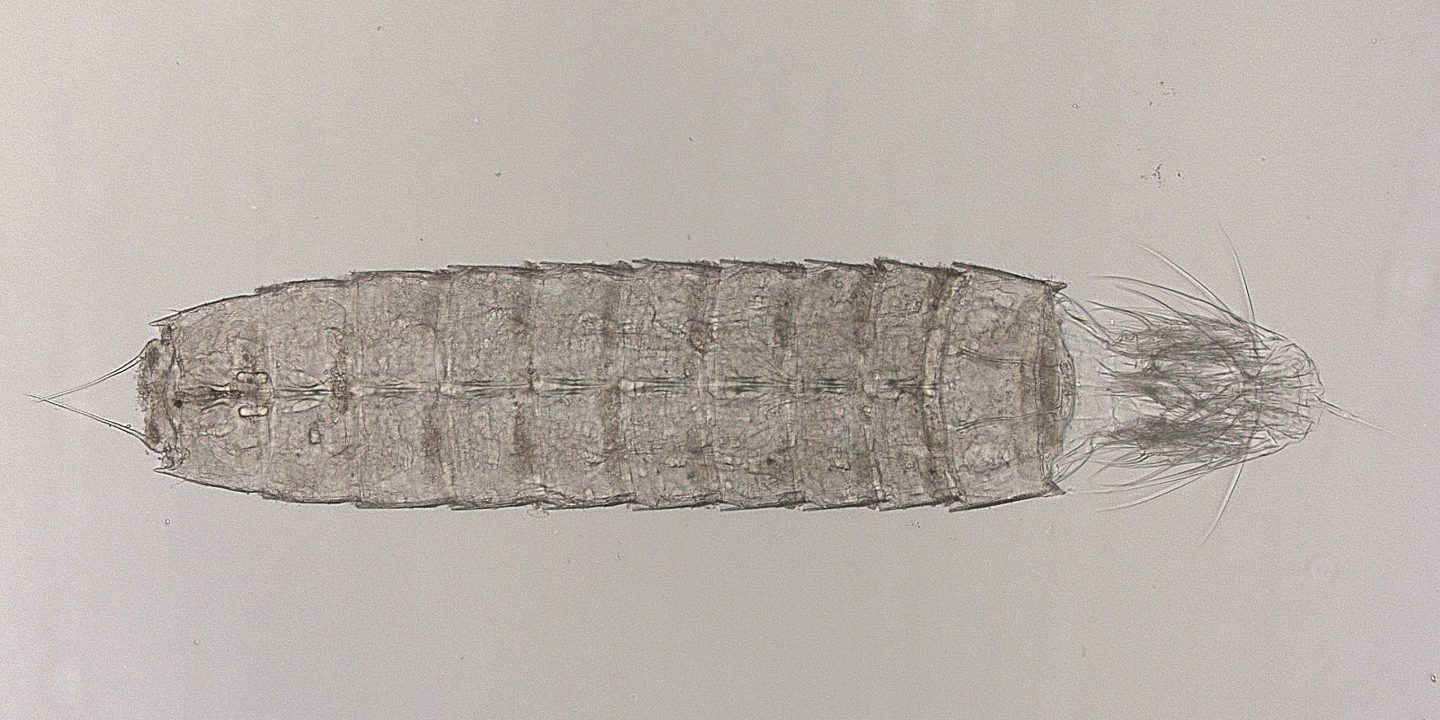The phylum Kinorhyncha – often referred to as mud dragons – includes exclusively marine meiofaunal species. Meiofauna or meiobenthos comprises animals that are characterized by size (> 45 μm and < 1mm) in order to discriminate them from micro- and macrofauna. Accordingly, Kinorhyncha are usually < 1 mm in size. They prefer muddy and sandy environments from the intertidal beach regions down to the sea floor of the deep sea. They are globally distributed, but occur usually in only rather limited numbers.
Together with the phylum Loricifera and the phylum Priapulida (priapulids or penis worms) the Kinorhyncha make up the Scalidophorida that are characterized by having characteristic scalids, structures that serve locomotion and/or sensory functions.
Th Kinorhyncha body consists of the head (introvert), a neck and a segmented trunk. Very typical is the a retractable mouth cone and numerous spinoscalids (appendages) of the introvert.
The biodiversity of the Kinorhyncha is still poorly known. Several hundred species have been described (see World Kinorhyncha Database) but new species are continuously added. In Norway some 20-30 species have been recorded. The highest species diversity has been reported for the southern parts of the country, but this observation may also reflect biased sampling and monitoring. An simple and easy strategy for collecting Kinorhyncha, as well as other meiofauna species, is the bubble-and-blot method; sediments from the sea floor are rigorously mixed with water to generate air bubbles that take the meiofauna species to the water surface where they can be harvested with a sheet of paper. Species identification requires subsequent microscopic inspection. In recent times, molecular approaching such as DNA barcoding have also been applied.

Our knowledge on the functions of Kinorhyncha species in benthic ecosystem is very limited. Some authors relate them to bioturbation of sediments, and they certainly play a role in the biodegradation of organic material and marine food chains.
![]()

2 Comments on “Group of the Month: The Phylum Kinorhyncha”